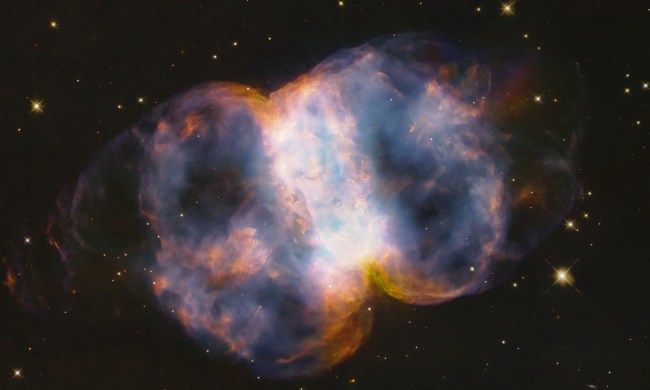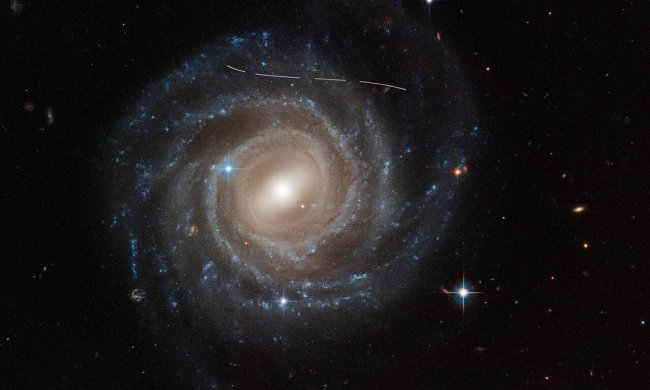This week’s image from the Hubble Space Telescope shows the dramatic and energetic jets given off by a young star, forming a wispy structure called a Herbig-Haro object. The image shows object HH34, located 1,250 light-years away in the Orion Nebula. The Orion Nebula is a site of active star formation and as it is bright enough to be seen even by the naked eye, it is often studied to learn about the formation of stars.
A Herbig-Haro object is formed when a young, particularly energetic star ejects particles of ionized gas in epic jets. These jets typically eject from opposite sides of the star, illuminating gas and dust around them which glows in beautiful colors. These jets are so powerful they can travel at hundreds of miles per second, meaning they spread far beyond the star and form these long, thin shapes which can be seen from great distances.

These objects can change rapidly over short periods of time as well, just as this one has done. “Herbig–Haro objects are seen to evolve and change significantly over just a few years,” Hubble scientists write. “This particular object, called HH34, was previously captured by Hubble between 1994 and 2007, and again in glorious detail in 2015.”
If you look at the previous image of HH34, captured in 2015, you can see how the object has changed in the handful of years since then. Most astronomical objects like stars tend to change over periods of thousands of years or more, so to see an object changing so rapidly is a rarity.
By looking at objects like HH34 astronomers can learn about the formation of stars and the jets of energy they can give off. This topic will be studied in more depth using the James Webb Space Telescope, which is able to look through the clouds of dust surrounding newly-born stars using its infrared instruments, to observe the newborns up close.



